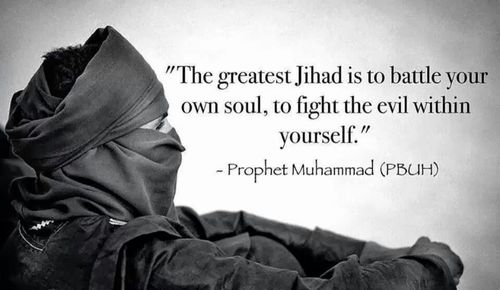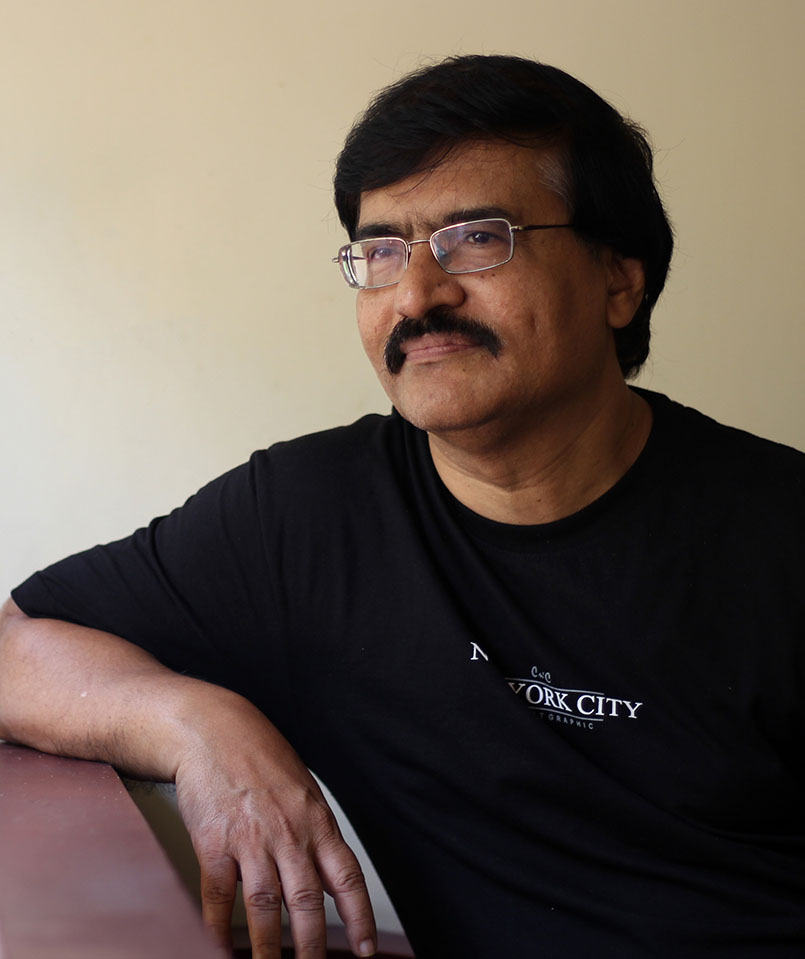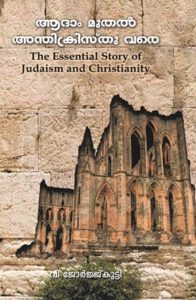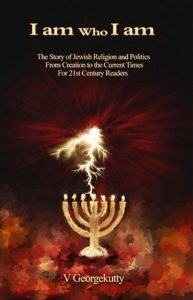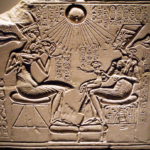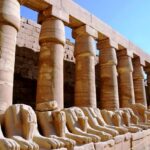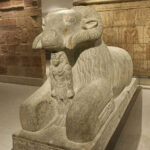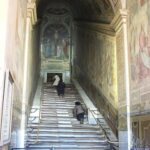“The idea that a country or a people could somehow be ordained by heaven to commit unspeakable acts in God’s name is insane. Unfortunately, history is full of inhuman acts by religious leaders in the name of their dogma or holy war.”
Introduction
On September 11, 2001, nineteen Islamic terrorists boarded four transcontinental flights from three US airports. Those terrorists had simply walked through airport security without arousing any suspicions. Two of those aircrafts took off from Boston’s Logan Airport, one from Washington’s Dulles International Airport, and the fourth from an airport in Newark, New Jersey. The common destination of three of those flights was California. The fourth one was headed for San Francisco. The aircrafts were fully loaded with fuel in view of the transcontinental routes of the flights.
Soon after take-off, the terrorists took control of the planes. The American Airlines Flight 11 had left Logan Airport at around 8 a.m. After forty-six minutes, the hijackers crashed the plane into the north tower of the World Trade Centre between the 93 and 99th floors. United Airlines Flight 175 had taken off from the same Airport a few minutes later. At 9:03 a.m., it tore into the south tower of the World Trade Centre between the 77th and 85th floors. The American Airlines Flight 77 had flown out of Dulles at 8:20 a.m. The hijackers turned it back to Washington. At 9:37, it crashed at high-speed into the west side of the Pentagon, the US defence headquarters located in Arlington County, Virginia. The plane sliced through its reinforced concrete structure to reach the third concentric ring of the building. The fourth aircraft could not reach its target. It crashed in a field near Shanksville, Pennsylvania at 10:03 AM killing everyone on board including the hijackers.
Latest estimates suggest that close to 3000 people had died in the attack. The cost of property and infrastructure damages has been put at around $10 billion. And the attack exposed the vulnerability of the biggest military power of the world and its most prestigious and protected structures. The attack also changed the world forever.
The US simply could not afford to take it lying down. It had to strike back to demonstrate and re-establish its military supremacy to the world. President George W Bush declared an all-out war against international terrorism. The President had named that offensive as a ‘Crusade’ against terror a term that has dangerous religious overtones. It resurrected in the hearts of the Islamic world, the painful memories of the medieval ‘holy’ wars that the Christians had unleashed on the Muslims.
Today nearly fifteen years later, the war on terror has reached nowhere close to achieving the objective of obliterating international terror in the name of Islam. The killings of Saddam Husain and Osama Bin Laden, considered as great achievements of steely resolve of the Americans, have only worsened the situation. After the exit of president Saddam Husain, the lands in and around Iraq have become a simmering cauldron of murder and mayhem. Millions of innocent people caught in the cross fire have lost their lives. Thousands have fled their homes to take shelter in refugee camps. The Islamic State (IS) has emerged as the most powerful and dreaded extremist organisation of the world. Obviously, the world has come to realize that it is not easy to douse the fires ignited by religious fervor…
This is the final part of the Four-Part series on the extremist predilections the Abrahamic religions – Judaism, Christianity and Islam. Part-I was general introduction to the series. In Part-II we discussed Judaism, the most ancient religion of historical monotheism. Part-III dealt with Christianity. In this final part, we will briefly review the history of Islam to understand how it moved towards the classic solution of bloodshed in the name of the divine.
Islam
Let us recapture the history of the descendants of Abraham from the point where we had left Ishmael and Hagar in the Palestinian deserts in Part-II of this series. God watched over the mother and child in the desert. The Arab hanifs1believe that Ishmael had lived in the deserts of Mecca and the Arabs are the descendants of Ishmael. And through Ishmael, Arabs too became the descendants of the Jewish patriarch Abraham. There is also a legend that when Ishmael grew up, Abraham visited his son at Mecca and the father and son duo had rebuilt the Ka’aba, the first Arabian shrine to Al-Llah (Allah).
Some Arabs had believed that Al-Llah meaning ‘the God’ was also the same divine being worshiped by the Jews and the Christians. But, the Jews and Christians had received ‘revelations’ from that God. The Jews had Torah and Christians the Gospels2. The Arabs had no such scripture. The sacred shrine of Al-Llah had remained in the midst of Arabs from time immemorial. Yet, they had received no ‘messages’ from Allah. The Arabs often felt inferior in the company of the ‘People of the Books’. Many felt that the Arabs had been left out of the divine plan. But the situation would change dramatically in the year 610 CE.
In the month of Ramadan about the year 610 CE, an Arab merchant named Muhammad ibn Abdullah hailing from the city of Mecca in the Arabian Peninsula (Now part of Saudi Arabia) withdrew from his mundane activities to live in a cave on Mount Hira in the Meccan valley. Many devout Arabs who lived in the Hijaz those days were taking such annual spiritual retreats. Muhammad would have spent the month in the cave in prayers and meditation had it not been for the profound spiritual experience he had one night. It changed Muhammad. It also changed the history of the world in a way inconceivable theretofore.
The Life of Prophet Muhammad
Muhammad was born in 570 CE in Mecca. His father, Abdullah, died several weeks before his birth. His mother died when he was six years old. He was raised by his paternal grandfather Abd al Muttalib. Muttalib was an influential leader of the ‘Quraysh’ tribe. When Muhammad was eight years old, his grandfather too died. He was then taken under the care of Abu Talib, his paternal uncle.
Under the guardianship of Abu Talib, Muhammad began his life as a trader. He was popularly known as ‘al-Ameen’ meaning the Honest, the Reliable and the Trustworthy. At the age of twenty-five, Muhammad married Khadija, the forty-year-old widow of a rich merchant. The couple had six children – four daughters and two sons. Their first son Qasim died at the age of two. The second son Abdullah too died in infancy. His daughters were Zainab, Ruqayyah, Umm Kulthum, and Fatimah.
Ka’aba was the sacred temple of monotheism of the ancestry of Patriarch Abraham of the Old Testament Bible. This holy shrine of Arabs attracted thousands of pilgrims from all over the Arabian Peninsula. The pilgrims flocking to this holy shrine brought along with them some of their own traditions and superstitions. In course of time, Ka’aba, the sacred sanctuary of monotheism, turned into a place of polytheism and idol worship.
However, in every generation a small group of people known as hanifs had kept the practices of pure monotheism. It is believed that Muhammad was a hanif. He had lived a life of piety and compassion. He had also taken time off from his worldly cares every year to make spiritual retreats into the mountain caves. On the 17th of Ramadan in the year 610 CE Muhammad was inside a cave on Mount Hira in the Meccan valley on such a mission. In the middle of that night, he had a terrifying spiritual experience.
Explaining his experience of that night in the cave, the Prophet would reportedly say, “an angel had enveloped him in terrifying embrace so that it felt as though the breath was being forced from his body. The angel gave him the curt command ‘iqra!’ ‘Recite!’ Muhammad protested in vain that he could not; he was not a kahin, one of the ecstatic prophets of Arabia. But, he said, the angel simply embraced him again until, just as he thought he had reached the end of his endurance, he found the divinely inspired words of a new scripture pouring from his mouth. The Word of the God had been spoken for the first time in Arabia and God had finally revealed Himself to the Arabs in their own language. The holy book [carrying those revelations] would be called the Qur’an: the Recitation” (‘Muhammad – A Biography of the Prophet’ by Karen Armstrong).
Muhammad became a Prophet3. The revelations he received led to the establishment of a new religion although the Prophet had insisted that he was not preaching a new religion but the ultimate revelation of the Judeo-Christian traditions. The new religion was named “Islam”, which meant submission (to God). His followers were called “Muslims” meaning “those who submit”. He taught that Abraham was the first Muslimsince he had lived in full submission to God when there were no Jewish or Christian scriptures to follow. The Holy Koran (Qur’an), therefore, venerates Jewish patriarchs like, Abraham, Noah, Lot, Joseph and Jonah. It also mentions Jesus with reverence, but not as the incarnate son of God, but as a prophet like other Jewish prophets.
It is believed that the establishment of Islamhad fulfilled the Biblical prophecy that the descendants of Ishmael would become a mighty nation. The promise of God to Abraham that “You will be the father of a multitude of nations” too apparently came true with the establishment of Islam.
The revelations to Muhammad continued for some twenty-three years. The revealed verses were recorded on a variety of available materials (leather, palm leaves, bark, shoulder bones of animals etc.)4 The verses were also memorized as soon as they were revealed, and were recited in daily prayers by Muslims. The revelations were not recorded in the order in which it was received by the Prophet but in the order suggested by the Prophet (based on instruction he received from Gabriel,the archangel of God). The Qur’an5speaks in the first person as Allah’s direct commandments to His creation. The Prophet’s own sayings, actions, and approvals are recorded separately in collections known as Hadith. (The Islamic legal system derived from the Koran and the Hadith is the Sharia – the code of Islamic Law.)
The Prophet’s wife Khadija became the first individual to accept Islam. She stood by her husband in the course of the hard life he would encounter after he started preaching the new faith. The few other people who embraced Islam in the beginning were the Prophet’s cousin Ali, his servant Zayd ibn Harithah, his friend Abu Bakr and the Prophet’s daughters. The Muslims accepted the new faith by testifying that: “There is no Deity (worthy of worship) except Allah (The One True God) and Muhammad is the Messenger of Allah.”
In the first three years of Islam, only around forty people came into the faith. But trouble started when the Prophet began his public preaching to invite people to the Islamic fold. The Quraysh, leaders of Mecca did not accept Muhammad as the Prophet of Allah. The leaders of the tribe advised him to give up preaching of his new faith. When the Prophet refused to relent, they tried to entice him with bribes. When that too failed, the leaders of the Quraysh began to persecute Muslims. The Prophet was publicly ridiculed and humiliated. The Quraysh then imposed a total ban on contact with the Prophet’s family. This boycott continued for three years. But he advised Muslims to maintain restraint since he had no revelation yet to retaliate against the persecutors of Islam. Soon after the boycott was lifted, Khadija, the Prophet’s wife and Abu Talib his uncle died.
Muslims believe that in 621 CE the Prophet had an instant night journey from the sacred Mosque near Ka’aba to the Temple Mount in Jerusalem. At the Temple Mount, he had a meeting with earlier Prophets (Abraham, Moses, Jesus and others). After the meeting, the Prophet was taken to the heaven to show him the signs of God. The same night, the Prophet was back in Ka’aba6.
In 622 CE, the leaders of the Quraysh hatched a plot to kill the Prophet. However, the Prophet slipped off from their hands on the night he was to be assassinated. He left Mecca under the cover of darkness, accompanied by his friend Abu Bakr. They went south of Mecca to a mountain cave of Thawr. After staying in the cave for three nights, they travelled north to Yathrib (Medina), a place at a distance of about two hundred and fifty miles from Mecca. This event of migration of the Prophet from Mecca to Medina came to be known as the ‘Hijra’ (migration). The Islamic calendar began with this event. The people of Medina received the Prophet with great enthusiasm7.
One by one the Muslims of Mecca who could make a secret exit, left for Medina leaving all their possessions behind. To insure peace and tranquility at their new location, the Prophet proposed a treaty defining terms of conduct for all inhabitants of Medina. The treaty was ratified by all – Muslims, non-Muslim Arabs and Jews. The Prophet was commencing the tedious task of establishing a political state to be ruled in line with Islamic teachings.
In 628 CE, the Prophet and some fifteen hundred of his companions left for Mecca to perform the annual Hajj pilgrimage to Ka’aba. The Meccans stopped the pilgrims at Hudaybiyah. After negotiations, a treaty was signed in which the Meccan agreed to allow Muslim pilgrims into Mecca the following year. The new faith was spreading and a large number of people accepted Islam.
In 629 CE, the Quraysh violated the terms of treaty made at Hudaybiyah by helping an attack on an ally of the Prophet. Some of the people who came under attack escaped to Mecca. The Prophet then marched to Mecca with an army consisting of some ten thousand Muslims. The army entered Mecca without being challenged. The Prophet went directly to the Ka’aba. He praised Allah for facilitating the triumphant entry of Muslims into the Holy city. All the idols in the Ka’bah were removed. The sanctuary was restored to its original monotheistic purity. While standing by the Ka’bah, the Prophet declared clemency for the Meccans. He declared that it would not be lawful ever, for anyone believing in Allah and the last day, to shed blood in the holy city of Mecca.
By 630 CE, a year after the triumphant entry of the Prophet into Mecca, almost all of Arabia accepted Islam. Among the Prophet’s close companions were Muslims from such diverse regions as Persia, Abyssinia, Syria and Rome.
The Prophet performed his first and last Hajj pilgrimage in 632 CE. One hundred twenty-thousand men and women went with him on that pilgrimage. The Prophet received the last revelation during this pilgrimage. Two months later, he fell ill. On Monday, 12 Rabial-Awwal, the eleventh year after Hijra (June 8, 632 CE), the Prophet died in Medina, on his sickbed in the chamber of Ayishah, his favourite wife. He was buried inside the same chamber.
After a short dispute concerning his successor, Abu Bakr, who had led the prayers during the period of illness of the Prophet was elected Caliph8. During his short two-year reign, he put down attempted revolts in the peninsula by Bedouin tribes seeking to throw off the yolk of Islam. Umar (Omar) followed Abu Bakr as Caliph. Before the death of Caliph Omar9, Islam had spread to Iraq and Syria and within a hundred years to countries as far as India in the east and Spain in the west. Today, Islam is the world’s second largest religion. Estimates suggest that there are close to 1.6 billion (160 Crore) Muslims in the world. It constitutes some 24% of total world population.
Islam is a religion of monotheism without the doctrinal complications of Judaism or Christianity. In Islam, the faithful have to work towards their salvation rather than expecting to be saved by any miracle. Islam does not have a hierarchical system like the one witnessed in the Christian faith. There are no first, second and third class Muslims. Eventually a clergy that led the prayers and experts in the Islamic law emerged. But unlike the Christian priests, they never claimed to be representatives of the divine on earth holding in their hands all the powers of God. Islam requires the faithful to adhere to five primary obligations of faith, often called the ‘five pillars of Islam’10
Jihad, the Islamic Holy War
Aggressive wars were against the teachings of the Prophet. The Holy Koran condemns war as a state of affair opposed to the will of God. The Holy Koran says that when the enemies of the Muslims “kindle a fire for war, Allah extinguishes it. They strive to create disorder in the earth and Allah loves not those who create disorder”, (28:78). But violence as means of self-defence is accepted in Islam. The Holy Koran says, “Had Allah not defeated some by the might of others, the earth would have been utterly corrupted”, (2:252). “Fight for the sake of Allah those that fight against you, but do not attack them first. Allah does not love the aggressors”, (2:191). But before long, Jihad would become not just defensive violence but aggressive bloodshed. The Islamic jurists would develop a theology of the Jihadin order to justify violence in the name of Allah (Just the way Christian thinkers came up with ‘just wars’ as narrated in Part-III).
The Arabic term Jihad has the literal meaning “strive” or “struggle”. (The term Mujahid means “someone who strives” or “a participant in jihad.”) Two different forms of Jihad are recognized in Islam. One is a spiritual mode in which every Muslim goes through the inner war of fighting to overcome evil. This is the Jihad of love. Jihad also has a violent mode of external ‘holy wars’. Such a Jihad involves blood, death and destruction. It is a Jihad of the sword. Bernard Lewis, one of the world’s foremost scholars of Islam and the Middle East, finds that “the overwhelming majority of classical theologians, jurists, and traditionalists . . . understood the obligation of jihad in a military sense.” There is a background to such a view.
Despite its monotheism, Islam, like Judaism and Christianity, was at various stages influenced by the dualist idea of a cosmic clash of good and evil, light and darkness, order and chaos, truth and falsehood, God and the Adversary (variously termed as devil, Iblis, Satan) and so on. After Hijra, The Prophet gradually established an Islamic state at Medina. Thus beyond being a Prophet and a teacher, Muhammad became a ruler and a soldier. As such, his struggles also involved the political state and its armed forces. He was often leading the battles for Islam. Muslims as believers of the one true God think that they are fighting for God. Such a thinking made all the opponents of Islam as forces fighting against God. In principle, God is the supreme head of the Islamic state. Thus, the Islamic army is God’s army and the enemies of Islam are God’s enemies. The Mujahid’s duty is to dispatch God’s enemies quickly to the place where God will chastise them for their infidelity. With such a view, in Islam, the cosmic struggle between two opposing powers very soon acquired political and even military dimensions.
Aggression entered Islam in Medina with raids (Razzia) against Meccan caravans. There are several reasons attributed the decision of the Prophet to carry out such raids. The Muslims had fled to Medina leaving all their belongings at Mecca. They were traders and there was no opportunity for them to make a living through trading activities at Medina that was essentially an agrarian settlement. Also, the Meccans were some way aggressors in that they had driven the Muslims out of their city. Moreover, caravan raids had long been “a sort of national sport in Arabia and an accepted way of making ends meet when times are hard” (Karen Armstrong – Muhammad…)
One day in the year 624 CE, the Muslims in Medina came to know about a particularly important caravan heading to Mecca that would pass through Badr, a place some hundred miles away from Medina. The caravan was accompanied by most of the Quraysh leadership. Since the leaders of the caravan realized the threat from the Muslims of Medina, they had asked for additional forces for the protection of the caravan. Thus, the raiders from Medina discovered at the end of their long and tiring journey that their 313 people would be fighting against a force of around thousand Meccans. But it was too late for them to turn back.
The Muslims fought valiantly. And against all odds, they won the battle. They believed that because they had put in their best, God stepped in to grant them the incredible victory. The Prophet called it a furqan, meaning both separation and salvation. Just as the Israelites interpreted the safe crossing of the Red Sea and the drowning of the army of the Pharaoh, the Prophet too interpreted the victory in the battle of Badr as a separation of the just from the unjust.
The Holy Koran says, Allah revealed his will to the angels saying, “I shall be with you. Give courage to the believers. I shall cast terror into the hearts of the infidels. Strike off all their heads, maim them in every limb” (Sura 8:12).
“It was not you but Allah who slew them. It was not you who smote them; Allah smote them so that he might richly reward his faithful. He hears all and knows all. He will surely thwart the designs of the unbelievers” (Sura 8:18).
As we often find, the incredible victory in the Battle of Badr gave rise to a belief in God’s special intervention leading to a stronger sense of a divine mission. Although a ‘holy war’ was not in the original plan, the migration from Mecca to Medina became a prelude to the (Islamic) Jihad (holy war). It gave credence to the believers the sense ‘us’ and ‘them’. On one side were the warriors of God, the Muslims. On the other side were the enemies of God, the ‘infidels’. It is the mission of the true Muslims to annihilate the infidels. Those following the true God of Islam would come out victorious against all odds and the overwhelming might of the enemies of God. However, Islam still had not turned a ‘religion of the sword’.
The Prophet died in 632. The shock of his death threatened to bring down the Arab unity established through his decade long hard work. The Caliphs (successors of the Prophet) realized that if they had to prevent the old inter-tribal rivalries from raising its ugly head once again in self-annihilating bloodsheds, they had to channel the aggressive instincts of the community towards non-Muslims. The idea of a cosmic war between opposing forces of virtue and evil came to be interpreted as earthly battles between the true followers of Allah and the rest, the infidels.
Islamic jurists started teaching that because there was only one God, there must also be only one political state in this world, which would submit to the true religion (Islam). It was the duty of the ‘Islamic State’ (The House of Islam) to conquer the non-Islamic world (The House of War). Once the world as a whole becomes an Islamic State, it would reflect the divine unity. Every Muslim must participate in this ‘holy war’. The House of Islam must never compromise with the House of War.
It is considered the duty of Muslims to bring the ‘House of War’ to the ‘House of Islam’. “But the greater part of the world is still outside Islam, and even inside the Islamic lands, according to the view of the Muslim radicals, the faith of Islam has been undermined and the law of Islam has been abrogated. The obligation of holy war therefore begins at home and continues abroad, against the same infidel enemy” (Bernard Lewis in his article ‘The Roots of Islamic Rage’ – The Atlantic, September 1990). Therefore, Muslims would remain in a perpetual state of war, until the final domination of the world by Islam is achieved. And the religion of peace became the religion of the sword. With justification found for aggressive ‘holy wars’, Arab armies started invading the neighbouring countries with astounding success. In just a hundred years after hijra, the new Islamic empire stretched from the Himalayas to the Gibraltar.
But things did not pan out as anticipated by the House of Islam. By the beginning of the eighth century, the fervour of Jihad burned out. The House of Islam was faced with serious internal issues that made them realize that it was impossible to continue the ‘holy wars’ for territorial expansion. They abandoned the doctrine of Jihadand accepted the reality that they would have to coexist in peace with non-Muslim states. Muslim nations entered into diplomatic relationships with non-Muslim countries. This was anathema to the theology of Jihad propounded by the jurists in the Sharia – the Islamic holy law. Slowly Muslims forgot jihad. But it was only the lull before the killer storm…
After al-Qaeda and Taliban, Islamic State (IS) (also known as Islamic State of Iraq and al-Sham (Syria) (ISIS)) has now emerged as the most devstating threat to world peace. IS follows a distinctive variety of Islam. The group seized Mosul, Iraq in June 2014. In spite of the US supported offensives to dislodge them, the IS already has control over an area larger than the United Kingdom. Their leader is Abu Bakr al-Baghdadi who remained almost under hiding for a long while until his last appearance in the summer of 2014. On 5 July 2014, he stepped into the pulpit of the Great Mosque of al-Nuri in Mosul, to deliver a Ramadan Sermon as the first caliph in generations11. He suddenly metamorphosed from a hunted guerrilla to be the spiritual head of Muslims across the globe. His call triggered an unprecedented flow of Jihadists from all over the world to join the IS. It is Jihad once again in its most destructive and murderous form.
It is once again the ‘House of Islam’ against the ‘House of War…
Conclusion
The killings in the name of faith do not end. Religious violence does not stop. If anything, atrocities in the name of faith have only been escalating all over the world. And when religion is mixed with the cravings for political power and territorial ambitions, it produces a dangerous concoction that has the potential to send the whole world up in flames.
Let me close this post and this series on Abrahamic Religions. Islam claims its ancestry to Abraham and his son Ishmael. According to Old Testament Bible, the ‘angel of the Lord’ had told Hagar, mother of Ishmael,And he [Ishmael] will be a wild man; his hand will be against every man, and every man’s hand against him…” (Genesis 16:12). Well… Looking at what is happening around the world, one is inclined to accept that it was one prophesy that has come true and devastatingly so…
Notes
1Hanifs: People who maintained the pure monotheistic beliefs of the patriarch Ibrahim (Abraham in the Bible).
2Because of their scriptures, the Holy Koran refers to Jews and Christians as the ‘People of the Books’.
3Islam believes that Muhammad was the last Prophet in the line of Prophets sent by Allah to guide man to the right path. Adam was the first Prophet.
4The revelations might have been written down by other people since the Prophet was reportedly illiterate.
5The Qur’an mentions twenty-five Prophets by name. The Qur’an also mentions four previously revealed Scriptures: Suhoof (Pages) of Ibrahim (Abraham), Taurat (‘Torah’) as revealed to Prophet Moses, Zuboor (‘Psalms’) as revealed to Prophet David, and Injeel (‘Evangel’) as revealed to Prophet Jesus.
6The Temple Mount is Mount Moriah of the Old Testament Bible where Patriarch Abraham had almost sacrificed his only son Isaac on the command of God. King Solomon, the son of King David had built the holy Jewish Temple (Jerusalem Temple) on this mount. The temple was destroyed by Babylonian King Nebuchadnezzar in BCE. It was rebuilt once by Jews who returned from their Babylonian exile. It was later modified by King Herod the Great. In 70 CE, the Romans destroyed the new temple. The al-Aqsa mosque standing today on The Temple Mount was built by Muslims in the memory of the Prophet’s journey to heaven from there. More details are available in Parts II & III of this series.
7Medina was place to which the Prophet had family connections.
8The Caliph is the civil and religious leader of a Muslim state.
9Caliph Omar had entered the gates of Jerusalem in 638 CE conquering the holy city, then under Christian control, for Islam. More details on this historic conquest is in Part-III of this series that discusses Christianity.
10The five pillars of Islam:
- Shahadah (Profession of Faith). Muslims bear witness to the oneness of God by reciting the creed “There is no God but God and Muhammad is the Messenger of God.”
- Salah (Prayer). The Islamic faith is based on the belief that individuals have a direct relationship with God. The world’s Muslims turn individually and collectively towards Mecca to offer five daily prayers at dawn, noon, mid-afternoon, sunset and evening. In addition, Friday congregational service is also required. It is permissible to pray at home, at work, or even outdoors. However it is recommended that Muslims perform Salah in a mosque.
- Zakat (Almsgiving). Social responsibility is considered part of one’s service to God. Zakat prescribes payment of fixed proportions of a Muslim’s possessions for the welfare of the entire community and in particular for its neediest members.
- Sawm (Fasting during the holy month of Ramadan). Ramadan is the month in which the revelations commenced. Therefore, it is the holy month of Islam. The month begins with the sighting of the new moon. During Ramadan abstention from eating, drinking and other sensual pleasures is obligatory from dawn to sunset. Muslims break their fast at sunset with a special meal, iftar, and perform additional night prayers. The end of Ramadan is observed by three days of celebration called Eid Al-Fitr, the feast of the breaking of the fast.
- Hajj (The Pilgrimage to Mecca). For those Muslims who are physically and financially able to make the journey to Mecca, the Hajj is a once in a lifetime duty that is the peak of their religious life. The Hajj is a remarkable spiritual gathering of over two million Muslims from all over the world to the holy city.
11In Apirl-2015, there were media reports that Baghdadi was grievously injured in the counter attacks led by the US against IS and is recuperating in an undisclosed location.
Click the Links below to read the other parts:
